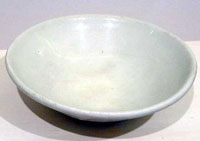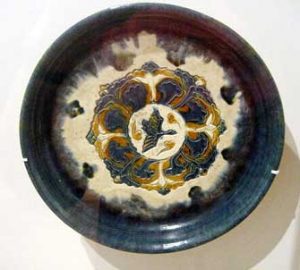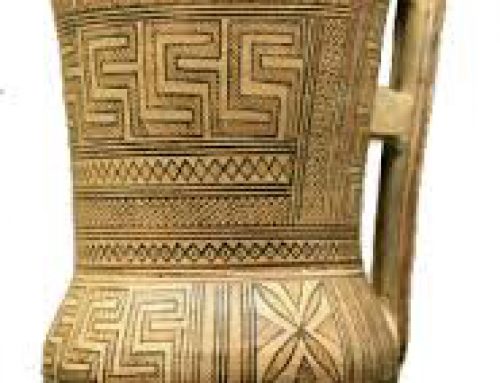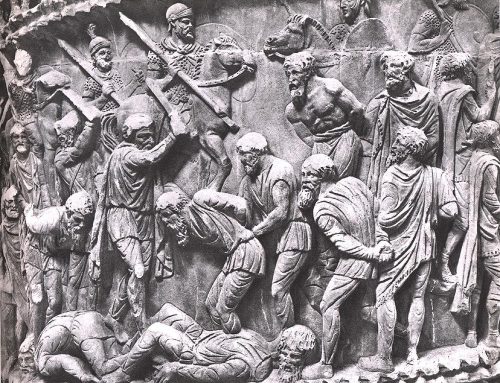
T’ang Dynasty cup (Musee Guimet, Paris)
Who invented porcelain?
About 700 AD in China, plain white porcelain pottery first begins to appear, like these cups and these bowls.
What is porcelain?
Porcelain is a special kind of pottery. Chinese potters working under the T’ang Dynasty discovered that if you used a special kind of clay to make your pottery, it would have special qualities. The Chinese potters didn’t know it yet, but what made this clay special was that it had a lot of kaolin in it.
(Find out more about kaolin)
In addition, the Chinese potters fired this clay at very high temperatures, so hot that some of the clay melted and became like glass, shiny and translucent (light could shine through it).

A T’ang Dynasty porcelain bowl
Porcelain and the Silk Road
Chinese artists sold this porcelain to Silk Road traders, who brought it east to the Islamic Empire. Porcelain was a huge hit in Central Asia and West Asia. Even though porcelain was fragile and heavy, it became a big part of China’s Silk Road trade.

More T’ang Dynasty pottery
(Read more about the Silk Road)
When were pottery glazes invented?
But porcelain wasn’t the only T’ang pottery innovation. Potters in both China and the Islamic Empire started to use glazes around 700 AD. They melted lead-based glazes over the dried white clay to make a shiny, glassy surface. People call this sancai glazing.
Why do potters glaze dishes and cups?
The glazes make a more brightly colored surface than clay slips. Glazes also make it a lot easier to wash dried food off the dishes.

T’ang Dynasty clay camel, ca. 650 AD (Musee Guimet, Paris)
T’ang potters used mostly brown and green glazes. To get brown, they mixed in a little iron, and to get green, they mixed copper in.
T’ang Dynasty clay figurines
T’ang Dynasty artists also made a lot of small clay sculptures like this one of a camel. They glazed many of the sculptures, too.

T’ang man on horseback, ca. 700 AD
The artists used clay slip to color this camel and his rider, but they used the new brown and green glazes to make this sculpture of a man riding a horse look brighter.
Both the camel and the horse show the interest that the Silk Road traders had for Chinese artists (and for their customers) in the Early Middle Ages.
Learn by doing: go look at some porcelain in a kitchenwares store
Medieval Islamic pottery
Tang Dynasty art
History of pottery
Bibliography and further reading about Tang Dynasty art:
The British Museum Book of Chinese Art, by Jessica Rawson and others (1996). Rawson is a curator at the British Museum, and she uses the collection of the British Museum to illustrate this book. Library Journal calls it “easily the best introductory overview of Chinese art to appear in years”.
Art in China (Oxford History of Art Series), by Craig Clunas (1997). Not specifically , but a good introduction to the spirit of Chinese art. Warning: this one is not arranged in chronological order. Instead, it has chapters on sculpture, calligraphy, and so on.
Arts of the Tang Court, by Patricia Eichenbaum Karetzky (1996). A brief introduction.




